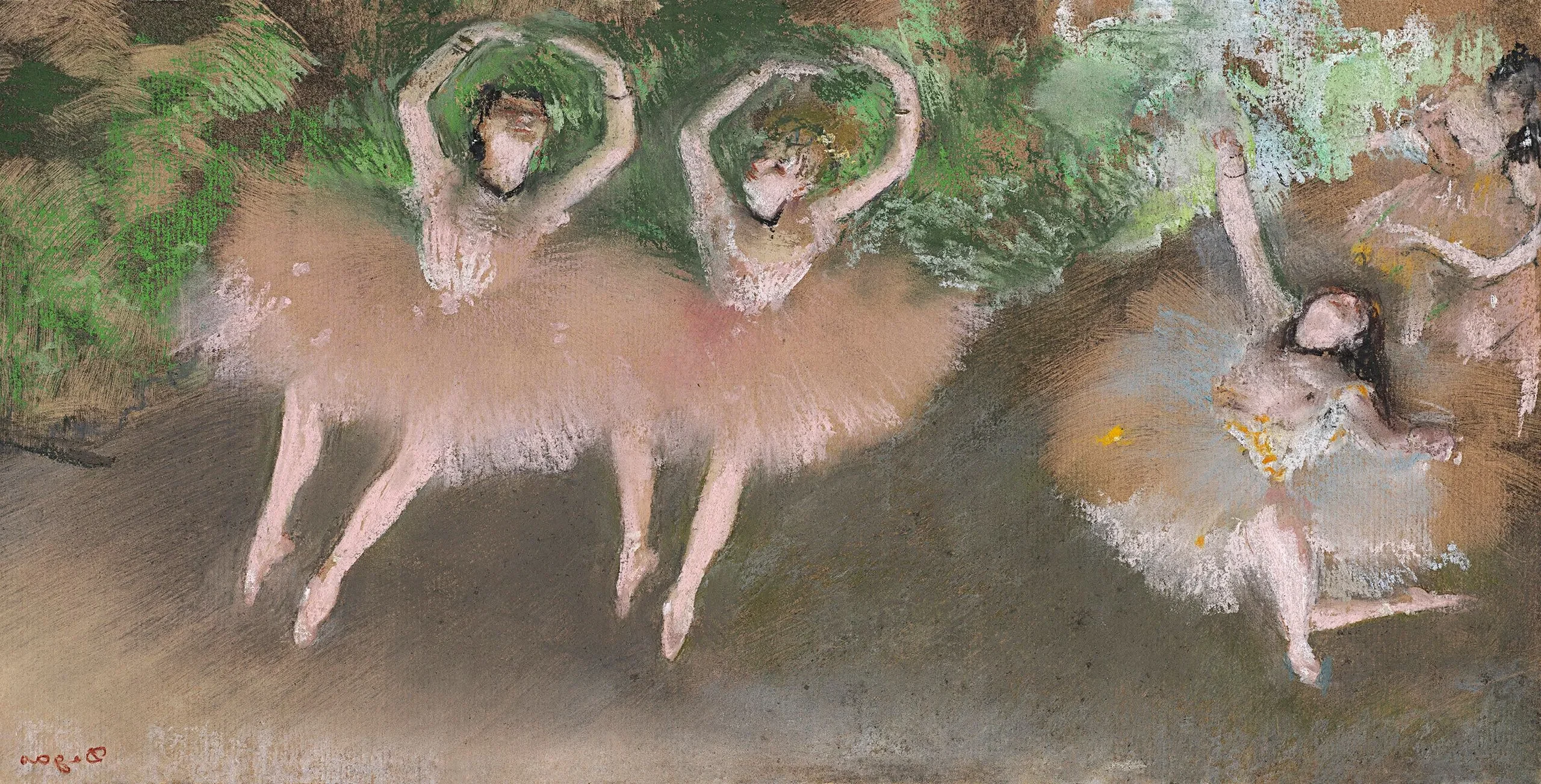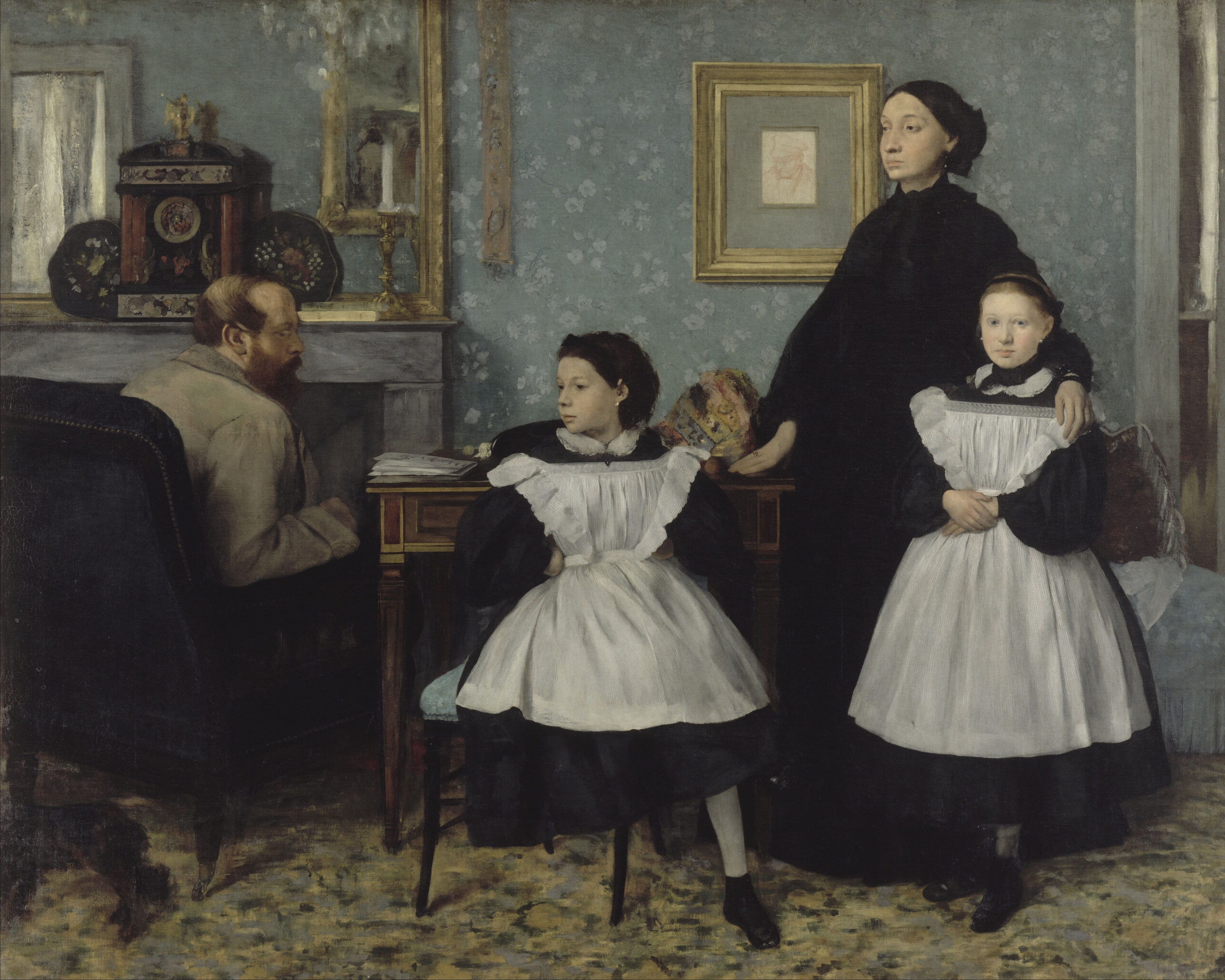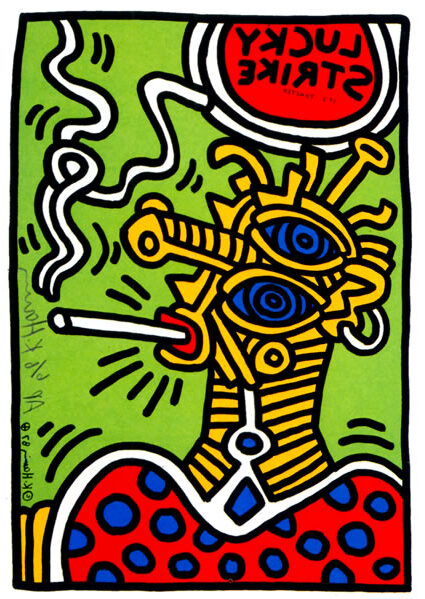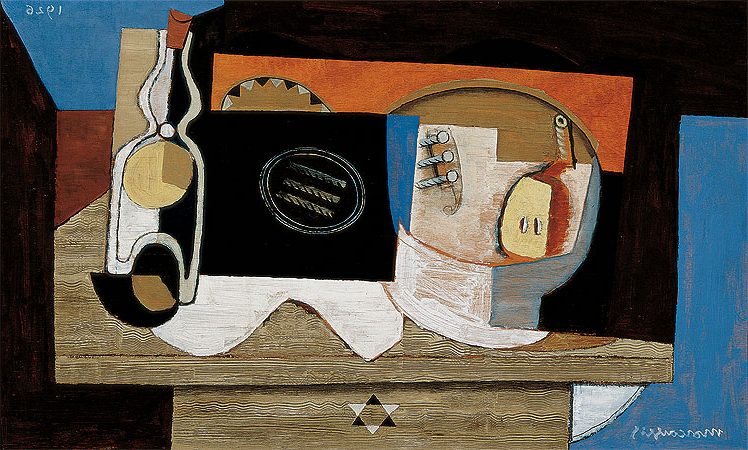Edgar Degas: Painter of Ballet, Movement, and Impressionist Mastery
Born: 19 July 1834, Paris, Kingdom of France
Death: 27 September 1917, Paris, France
Art Movement: Impressionism
Nationality: French
Teacher: Louis Lamothe
Institution: École des Beaux-Arts
Edgar Degas: Painter of Ballet, Movement, and Impressionist Mastery
Life and Education
Edgar Degas’s formative years and educational background significantly shaped his artistic development. His classical education combined with formal art training provided a foundation for his later innovative work.
Early Years in Paris
Edgar Degas was born in 1834 to a wealthy banking family in Paris, France. This privileged background allowed him to pursue his artistic interests from an early age.

Scene of War in the Middle Ages, 1865 by Edgar Degas
By age 18, he had already set up a studio in his family home, demonstrating his early commitment to art. In 1853, Degas graduated from the prestigious Lycée Louis-le-Grand with a baccalaureate in literature.
His father supported his artistic ambitions, though he expected Edgar to pursue a more traditional career path initially. The young Degas was educated in classics, including Latin, Greek, and ancient history, which would later influence his approach to art.
Artistic Influences
Degas received formal training under Louis Lamothe, a student of the neoclassical artist Ingres. This connection established Degas’s foundation in classical drawing techniques and precision.
He enrolled at the École des Beaux-Arts in Paris, further developing his technical skills. During this period, he studied the works of Renaissance masters, copying paintings in the Louvre to perfect his technique.
When the Franco-Prussian War erupted in 1870, Degas served in the National Guard. This experience affected his worldview and artistic direction. Shortly after the war, he traveled to New Orleans to visit relatives, producing several important works during this time.
His early training in academic traditions would later allow him to break from convention while maintaining technical excellence in his Impressionist works.
Artistic Style and Techniques
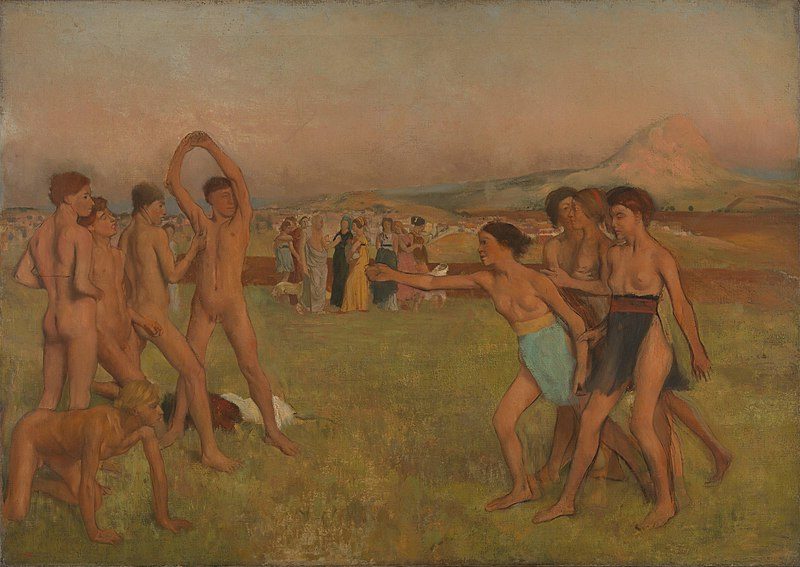
Young Spartans Exercising, c. 1860–1862 by Edgar Degas
Edgar Degas developed distinctive artistic approaches that set him apart from his contemporaries. His work balanced traditional training with bold innovation, particularly in his choice of subjects, compositions, and media.
The Impressionist Movement
Degas is often associated with the Impressionist movement, but his relationship with the group was complex. Unlike many Impressionists who painted outdoors to capture natural light, Degas preferred working in his studio. He focused on urban scenes and indoor subjects like ballet dancers, café scenes, and horse races.
His work emphasized modern life in Paris, particularly the entertainment and leisure activities of the growing middle class. While other Impressionists pursued landscapes, Degas was fascinated by human figures and movement.
Degas’ art showed influence from Japanese prints, with their asymmetrical compositions and flattened perspective. He often cropped his subjects in unusual ways, creating dynamic, snapshot-like images that felt spontaneous and modern.
Innovation and Methodology
Degas constantly experimented with techniques and materials throughout his career. He mastered pastels with extraordinary skill, revitalizing this medium by building complex layers and combining them with other materials like gouache and distemper.
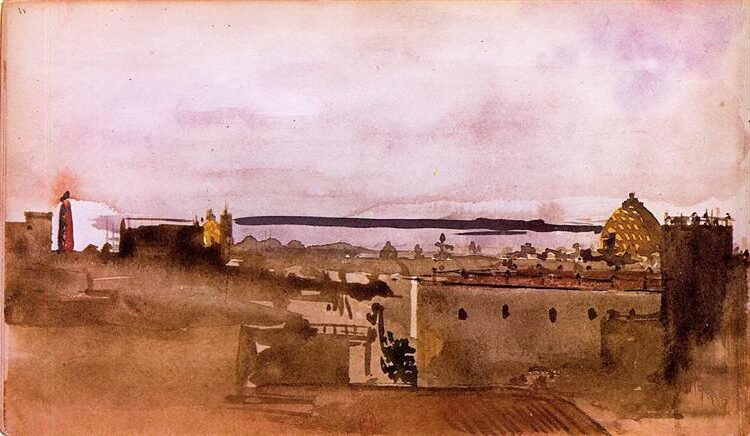
View of Naples, 1860 by Edgar Degas
His approach to color was sophisticated and subtle. Rather than using the bright palette of many Impressionists, Degas preferred nuanced tones that captured the effects of artificial light in theaters and cafés.
Photography significantly influenced his work. Degas studied how cameras captured movement and unusual angles, which he translated into his compositions. This interest in new technologies reflected his innovative mindset.
As his eyesight deteriorated later in life, Degas turned increasingly to sculpture. His wax and clay figures of dancers and horses captured movement in three dimensions, showing his continued exploration of the human form.
Major Works and Legacy
Edgar Degas crafted a remarkable body of work that cemented his place in art history. His innovative techniques and unflinching social observations continue to influence artists today.
Iconic Depictions of Dancers
Degas is perhaps best known for his paintings and sculptures of ballet dancers. He created more than 1,500 works featuring dancers, capturing them both on stage and behind the scenes. Works like “The Dance Class” and “Ballet Rehearsal” reveal his interest in movement and light.

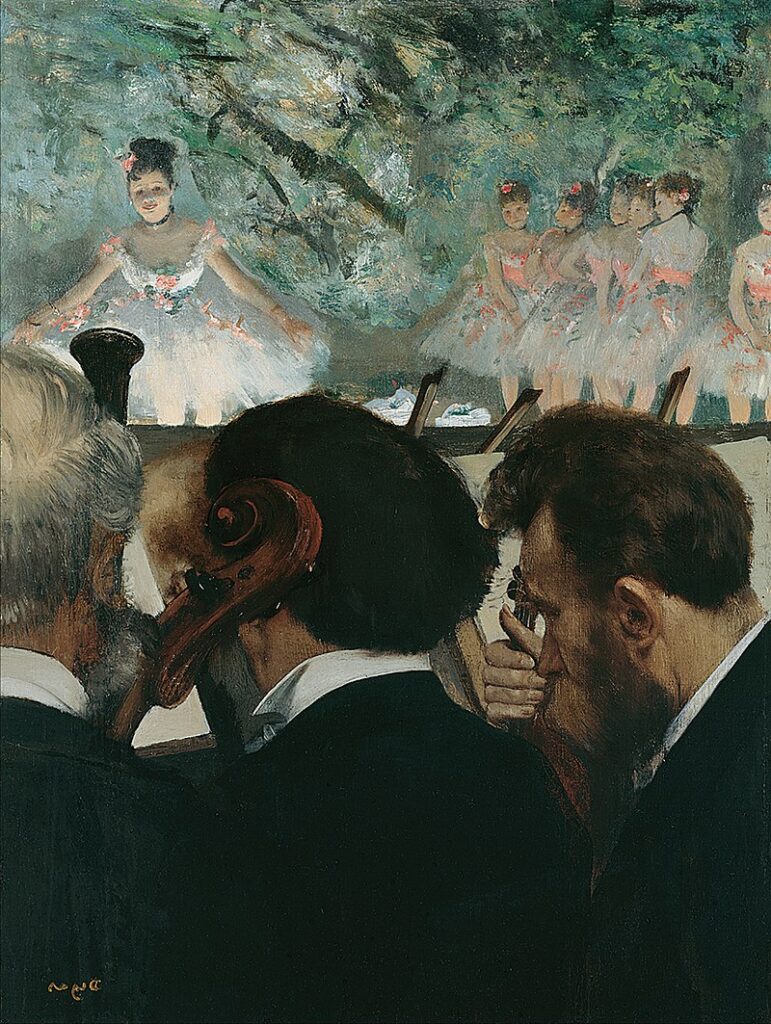
Unlike other artists, Degas showed dancers in realistic poses – stretching, adjusting their costumes, or resting. He portrayed the physical demands of their profession rather than just the glamour.
His bronze sculpture “Little Dancer Aged Fourteen” caused controversy when first exhibited in 1881. The realistic depiction of a young ballet student with actual fabric tutu and hair ribbon blurred the line between art and reality.
Portraiture and Family Influences
Degas’s early work focused heavily on portraiture, revealing his technical mastery and psychological insight. “The Bellelli Family” (1858-1867) stands as one of his most significant early works, depicting his aunt, uncle, and cousins in a composition filled with tension.

The Bellelli Family (1858–1867) by Edgar Degas
His portraits often captured subjects in unguarded moments, suggesting inner thoughts or feelings. This approach differed from traditional portraiture that emphasized flattering poses and expressions.
Degas frequently painted women at work—laundresses, milliners, and café singers—showing respect for their labor while revealing social realities often ignored by other artists.
His friendship with American painter Mary Cassatt led to mutual influence, with both artists exploring the representation of women in everyday settings.
Degas and the Impressionist Group
Though connected to the Impressionists, Degas preferred to call himself a “realist.” He exhibited in seven of the eight Impressionist exhibitions between 1874 and 1886 but maintained his artistic independence.

At the Races in the Countryside, 1869 by Edgar Degas
Unlike Monet and Renoir who often painted outdoors, Degas worked primarily in his studio. He shared the Impressionist interest in modern life but focused on indoor scenes and artificial lighting.
The artistic discussions at Café Guerbois with fellow artists like Édouard Manet shaped his thinking, though he often took contrary positions.
Later in life, Degas’s controversial political views, including his anti-Semitism during the Dreyfus Affair, strained relationships with fellow artists. Despite these personal failings, his artistic influence remained profound, especially on younger artists like Toulouse-Lautrec.
Frequently Asked Questions
Edgar Degas was a complex and innovative artist whose work continues to captivate art enthusiasts worldwide. His unique techniques, subject matter choices, and artistic evolution raise many common questions among those studying his contributions to art history.
What are the characteristics of Edgar Degas’ painting style?
Degas developed a distinctive style characterized by unusual visual angles and asymmetrical compositions. He preferred indoor scenes with artificial lighting, which created dramatic shadows and highlights in his work.
His brushwork varied throughout his career, eventually becoming looser and more textured. Degas was particularly skilled at capturing movement and fleeting moments, especially evident in his dancer paintings.
He often employed pastels in his later years, blending colors directly on the canvas rather than on a palette. This technique gave his work a vibrant, immediate quality that distinguished it from other Impressionist paintings.
How did Edgar Degas contribute to the Impressionist movement?
Though Degas exhibited with the Impressionists, he rejected the label, preferring to be called a realist. He participated in seven of the eight Impressionist exhibitions between 1874 and 1886, helping establish the movement.
Unlike many Impressionists focused on landscapes and natural light, Degas concentrated on urban scenes and interior spaces. His interest in capturing modern life aligned with Impressionist values, even as his techniques differed.
Degas helped expand the definition of Impressionism through his focus on precise drawing and composition rather than spontaneous plein-air painting. His influence broadened the movement’s scope beyond its initial parameters.
What are some of the most celebrated works of Edgar Degas?
“The Dance Class” (1874) stands as one of Degas’ most recognized works, depicting ballet dancers during rehearsal. “L’Absinthe” (1875-1876) portrays Parisian café culture with its unflinching, almost harsh realism.
“After the Bath, Woman Drying Herself” represents his numerous pastel works of women bathing. These intimate scenes showcase his mastery of the human form and unposed moments.
His bronze sculpture “Little Dancer Aged Fourteen” created controversy when exhibited in 1881. With its realistic style and mixed materials, it broke artistic conventions of the time.
How did Edgar Degas’ background influence his art?
Born to a wealthy banking family in 1834, Degas received a classical education that shaped his disciplined approach to art. His father encouraged his artistic studies, allowing him to copy masterworks in the Louvre.
Degas’ legal studies before committing to art influenced his analytical approach to composition and form. His privileged upbringing gave him access to Paris’ cultural elite and the financial freedom to pursue his artistic vision.
His friendship with the American artist Mary Cassatt and musician friends exposed him to diverse cultural perspectives. These relationships enriched his understanding of performance arts, evident in his ballet and opera scenes.
In what ways did Edgar Degas’ art evolve throughout his career?
Degas began with traditional historical paintings before shifting to contemporary subjects around 1870. His early work showed precise draftsmanship influenced by classical training and Renaissance masters.
As his career progressed, his style loosened and became more experimental. In his middle period, he focused intensely on ballet dancers, racehorses, and café scenes that captured modern Parisian life.
His later works, created as his eyesight deteriorated, featured bolder colors and more abstract forms. He increasingly turned to sculpture and pastels, developing a more tactile approach to compensate for his vision problems.
What techniques did Edgar Degas use to depict movement in his paintings?
Degas captured movement through careful observation and innovative composition techniques. He often depicted subjects in transitional poses rather than static positions, creating a sense of action frozen in time.
He studied photography and incorporated its influence through cropped compositions and unusual viewpoints. These techniques created dynamism and suggested movement continuing beyond the frame.
Degas used diagonal lines and asymmetrical arrangements to create visual tension and energy. His strategic blurring of certain areas while keeping others in focus mimicked how the human eye perceives rapid movement.

